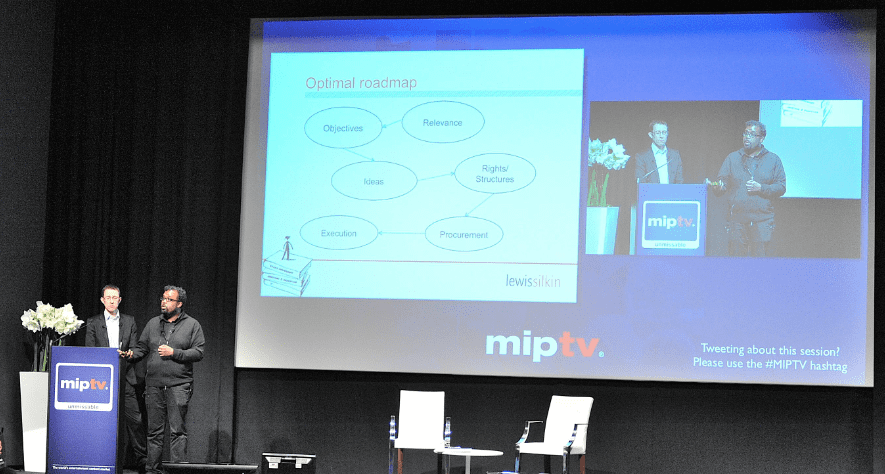Today we had the pleasure of Lewis Silkin LLP partner Cliff Fluet (right) and Bacardi Global Brands global marketing services director Adam Hillyer give an illuminating view of what you should watch out for when sealing a branded content deal, and how to go about it without unhappy surprises.
Where deals often go wrong:
- Structures/stakeholders.
- Roles/responsibilities. “Your average CMO might not be involved at the start, but he’ll be very hands-on by the end of it,” Hillyer cautioned.
- Fees/budgeting. “In the branded content world … the issue of money and [headline]fees tends to be very high-level … one million pounds” — but nobody asks how that breaks down, said Fluet. What those fees end up paying for — and what needs paying for that wasn’t accounted for at outset — often ends up unraveling the deal little by little. Who pays for insurance and indemnification? What are the costs of rights clearance/exploitation?
- Negotiation/procurement.
The optimal roadmap for your branded content negotiation and development process is in many ways the inverse of the typical one (where a thing like “Relevance” often appears, all of a sudden, at the end).
Here’s the order of action that Lewis Silkin and Bacardi found works best:
1. Relevance and 2. Objectives
- Get under brand’s skin
- If they can’t tell you, perhaps they don’t know yet
- Where is the sweet spot between opportunity and brand personality?
- Understand the consumer goals to set objectives
- Objective must be clear for both sides. If you’re having trouble setting objectives with your client, it’s likely because the client doesn’t know yet what the objectives are, Hillyer said.
3. Ideas
- Once you’ve decided on relevance and objectives, you can begin ideation and start mapping your prospective execution path, leading to…
4. Rights/Structures
- When there’s a clear view of objectives, a full appraisal of rights/structures can be made
- A 360-degree view of rights, not 100% ownership/control of rights
- Understanding what is fundamental: the pertinent media, stakeholders, clearances and rights all identified up front means a bad deal becomes apparent more quickly
- Focus on rights you can get (as opposed to the ones you don’t) and the way to exploit them at 360°
- Value the deals based upon rights granted and activation achieved
5. Negotiation/Procurement
- Once rights and structures are decided, orderly procurement process and negotiation is swift
- Clear parameters for budgets, rights and fees mean parties work with certainty
- Lets parties concentrate on higher order aspects (creative collaboration/reputation management)
- Iterative changes to the program can be managed as they happen
- Review objective delivery for both sides
6. Execution
- You ought to know what to do here.
A few crucial ideas for the road:
No two deals are the same, so while you should be rigorous about every step in your negotiation process (don’t leave anything to chance or “understanding”), leave room to let the deal evolve if indeed it needs to.
Toward the end of the session, a production company owner based in Bulgaria recounted his war tale of a pending branded content deal with a broadcaster who, toward the end, surprised him by saying he’d have to pay the price of a :30 spot, thirty times, because that is basically what he was asking to buy.
Fluet acknowledged the question with a wry smile and a bit of resignation. He said the producer had brought up an interesting point: the mutable nature of branded content means broadcasters don’t really know what to do with it, how to define it or even how to charge for it.
Your best defense is to make sure to meet the broadcaster and set clear expectations well before the deal begins.




